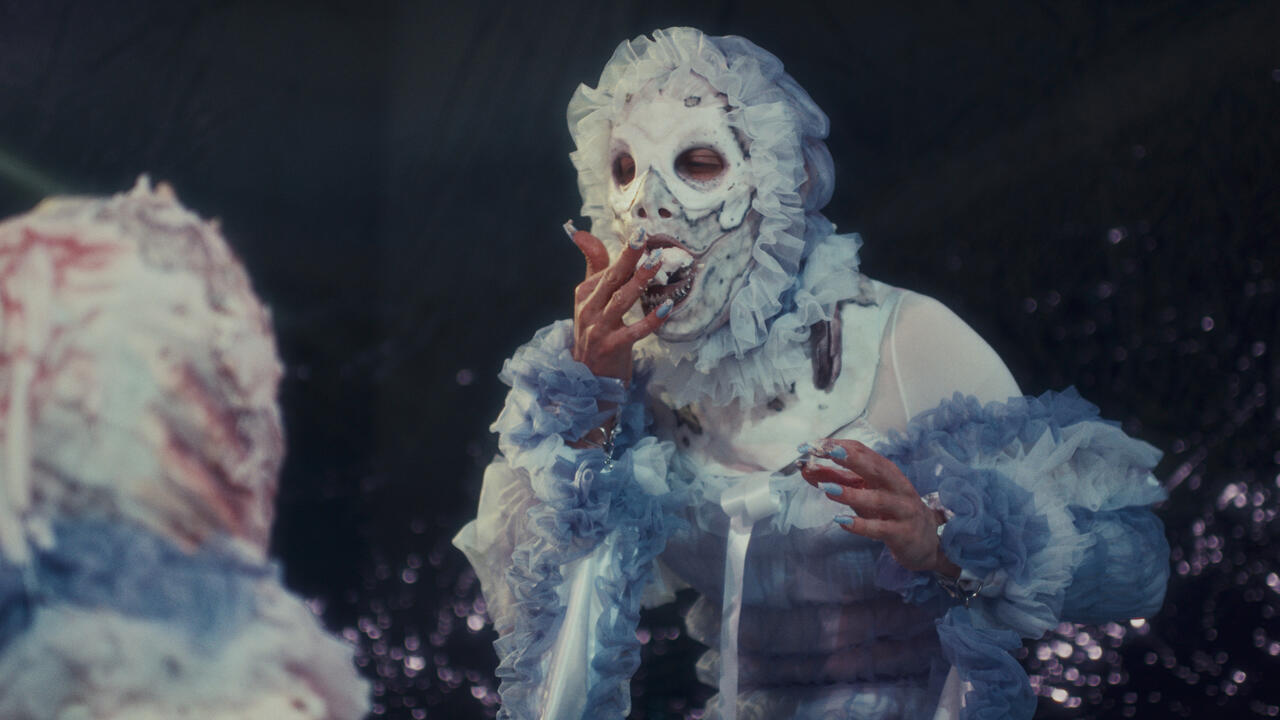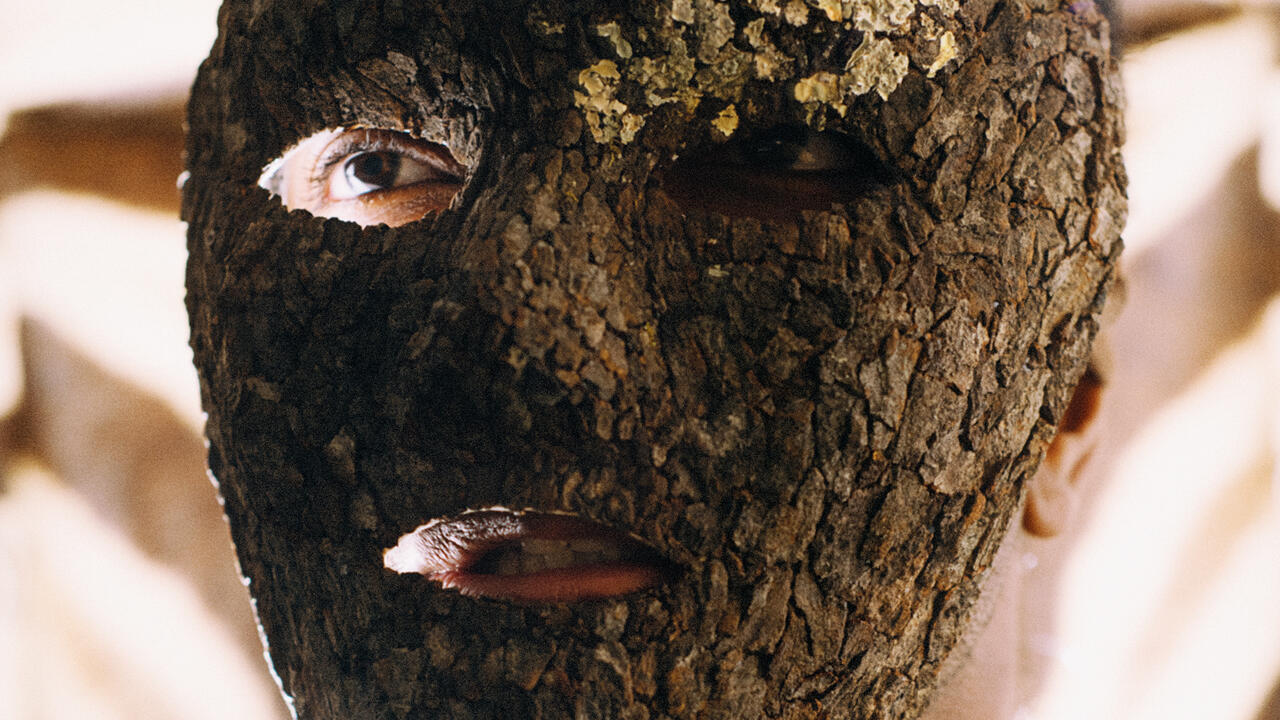Olafur Eliasson
Bonakdar Jancou, New York, USA
Bonakdar Jancou, New York, USA

After opening a door to what promised to be a dark, cramped interior, you stepped into a chilly exterior courtyard filled with light, reflected images, muffled sounds from the street below and, depending on the weather, perhaps rain or snow. Entitled Your Now is My Surroundings (2000), this installation by Olafur Eliasson was the result of a method that was, characteristically, both simple and ingenious: he removed the glass panels in the gallery's skylight and constructed beneath it a raised rectangular 'room' matching the width and depth of the aperture. Its wooden walls were, roughly, at eye-level; the intervening space to the skylight was spanned by glass mirrors. As the mirrors seemed to recede into the distance, distortions were intensified, causing the reflected walls to resemble a rippling green carpet. An array of multiplied and reflected objects became apparent, most of which would have been barely visible, if at all, without the mirrors. They included treetops swaying in a roof garden, water towers, silver smokestacks and a tiny aeroplane.
The second, more overtly kaleidoscopic part of the installation comprised a long, mirror-lined shaft running from a wall in a darkened corridor to the front of the building. The distortions were extreme on the near side of the shaft's interior, where reflections, shadows and the lines formed by the intersecting mirrors generated a dense green and black tangle, while closer to the street the geometry was more precise and the mirrors reflected the weather and buildings outside, as well as passing cars, which registered as flashes of smeary colour. Meanwhile, the plain wooden exterior of the shaft could be seen stretching through an adjacent room in the gallery and the reception area.
By dramatically fracturing and extending visibility the courtyard and mirrored shaft suggested different kinds of viewing machines; they were, however, distinct from both the 17th- and 18th-century camera obscura, or 'scenic' model of vision, and the stereoscopic and photographic models that replaced it. Neither was the work cinematic as defined by theorists for whom visual perception in cinema involves a displacement of the body. Eliasson has made references to film in speaking about other installations he has created, comparing, for example, the windows of one exhibition space to a giant movie screen, but his work is never intended to blur perception and representation - rather, he entirely eschews any form of representation, preferring to make the viewer's individual experience the subject of the work.
Although his environments are often captivating or seductive, Eliasson emphasizes that they are not intended to appear illusionistic and is careful never to drop a veil over his working methods. About an installation he made for the 1999 Carnegie International, Your Natural Denudation Inverted - for which he created a hot spring from the museum's exposed heating system - he remarked 'It is important for me to see the origin of the work, not to hide anything or to try turning it into magic.'
Eliasson's work is rooted in the everyday, recalling Jorge Luis Borges' belief that reality is less like prose than poetry. Describing the latter as an acute physical sensation, Borges wrote 'The aesthetic event is something as evident, as immediate, as indefinable as love, the taste of fruit, of water.' One might argue that to some extent Eliasson's work represents a distillation of the aesthetic experience, albeit while following his own elusive sensibility and eliciting a different response from each spectator.
At times reflecting the influence of Robert Buckminster Fuller's visionary, light-infused, utopian architecture, Eliasson's environments also invite comparison with the achievements of another architect, Claude-Nicholas Ledoux, whose 18th-century designs have been called a form of 'speaking architecture': Eliasson's aesthetic recalls, for example, Ledoux's House of the Surveyors of the River (c. 1780), a structure that was designed to allow a river to pass through it, while magnifying the sound of the rushing water. Ledoux's ideas, of course, were fantastic, bombastic and symbolic, and alluded to human attempts to impose order on nature, all characteristics that don't apply to Eliasson's work. Installations such as Your Now Is My Surroundings, however, suggest a similarly radical exploration of architecture as subjective experience.























